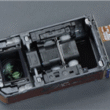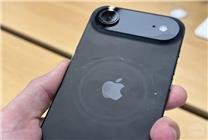iPhone 17: Addressing Concerns Over Durability and Scratches
Summary:
- Apple faces criticism over the durability of the iPhone 17, specifically regarding scratches and material transfer.
- The company maintains that reported issues are being overstated by the media.
- Apple plans to implement improvements to display models in retail stores.
As Apple continues to release its latest iPhone 17 series, it has encountered a flurry of feedback—particularly concerning the device’s durability. Among various issues, including WiFi connectivity troubles and display malfunctions, the most prevalent complaint has been about surface scratches on the iPhone 17’s body. Some users have even branded it the "most delicate iPhone in history," with reports of scratches appearing within mere hours of use.
Apple’s Response to Scratching Concerns
In response to these pressing issues, Apple has publicly acknowledged the concerns surrounding the scratches. Initial reports suggested that the back of the iPhone 17 Pro prototypes displayed at numerous retail locations appeared severely worn, particularly around the MagSafe area. Apple clarified that these marks were not actual scratches. Rather, they attributed the wear to the use of heavily worn MagSafe chargers in certain stores, which can transfer material to the device. The company assured customers that these marks can be easily cleaned off.
Furthermore, Apple indicated that this issue is not isolated to the iPhone 17 series; earlier models, including some iPhone 16 prototypes, have exhibited similar signs of wear. The company has committed to making necessary adjustments within retail environments to mitigate the wear and tear issues observed on display models.
Clarifying Misunderstandings
Apple asserted that external narratives have exaggerated these issues, stating, "The outside world has overextended some of the problems with the iPhone 17.” This sentiment reflects the company’s focus on ensuring customers have a balanced understanding of product durability based on actual use rather than anecdotal reports.
Adding to the conversation, iFixit, a professional disassembly organization, pointed out a design consideration regarding the iPhone 17 Pro’s camera module. They noted that the sharp corners of the module could be detrimental to the anodized surface treatment, potentially leading to increased susceptibility to scratches. They recommended that Apple consider employing more rounded designs to minimize similar problems in future iterations.
Apple’s Manufacturing Standards
In defense of the iPhone 17 Pro’s physical attributes, Apple reiterated that the device’s camera module shares the same stringent manufacturing standards as its other products made from anodized aluminum. These devices undergo rigorous wear-resistant testing prior to release. However, they acknowledged that normal wear and tear, including slight scratches, is possible with prolonged use.
Conclusion
As the dust settles from the launch of the iPhone 17 series, it’s clear that while concerns about scratches have generated significant discussion, Apple is eager to address these issues head-on. The company’s commitment to improving in-store display units and clarifying misconceptions is indicative of its dedication to customer satisfaction. Whether these measures will be enough to alleviate consumer anxiety remains to be seen, but Apple’s proactive stance suggests that they are more than willing to take necessary steps for improvement.
In the rapidly evolving landscape of smartphone technology, maintaining both functionality and aesthetic durability is crucial. As Apple refines its approaches and learns from consumer feedback, the long-term implications for the iPhone 17 series—and its successors—will be critical in shaping the future of smartphone design and consumer trust.










